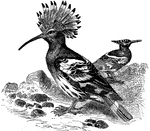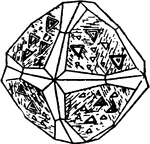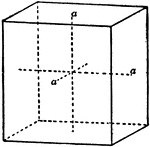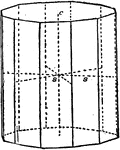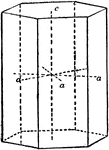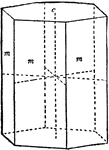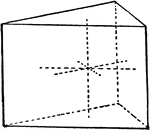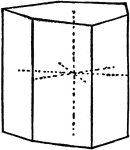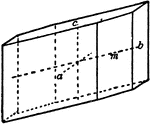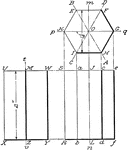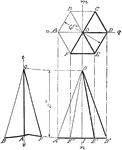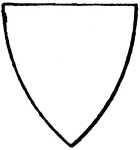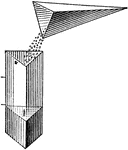
Comparative Volumes Of A Pyramid And Prism
Illustration used to compare the volumes of a pyramid and a prism by emptying sand from the pyramid…
Similar Rectangular Solids
Illustration of a 1 in. by 2 in. by 1 in. rectangular solid that is similar to a 2 in. by 4 in. by 2…
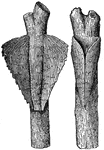
Cocoon of Pyralis Corticalis
"This was the beginning of a cocoon. Each triangular blade was composed of a great number of small,…

Mylohyoid Muscle
Shown is the mylohyoid muscle. The mylohyoid muscle is a flat, triangular muscle situated beneath the…
Carpal Articular Surface of the Radius
Carpal articular surface of the radius, and triangular fibro cartilage of the wrist.

Pyramids
An illustration of two pyramids. A pyramid is a building where the upper surfaces are triangular and…

Porro Prism
Double Porro prism systems are used in small optical telescopes to re-orient an inverted image, and…
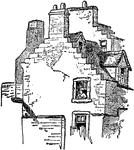
Crow-stepped Gable
A Crow-stepped gable is a stair-step type of design at the top of the triangular gable-end of a building.…

Formation of Circles of Diffusion
An illustration depicting the formation of circles of diffusion. "From point A luminous rays enter the…
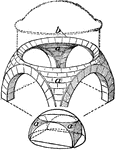
Diagram of Pendentives
A pendentive is a constructive device permitting the placing of a circular dome over a square room or…

Zircon
"Zircon, a mineral composed of of zirconium silicate, sometimes used as a gem-stone... THe mineral crystallizes…
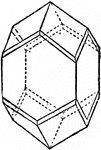
Zircon
"Zircon, a mineral composed of of zirconium silicate, sometimes used as a gem-stone... THe mineral crystallizes…

Openwork Gable, From Front of Rouen Cathedral
A gable is the generally triangular portion of a wall between the edges of a sloping roof. A wimperg…
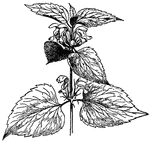
Lamium Album
Lamium album (White Deadnettle) is a flowering plant in the family Lamiaceae, native throughout Europe…

Écu
"The shield carried by a mounted man-at-arms in the middle ages; especially, the triangular shield of…

Triangular Panel
The triangular panel is found at the stall of the Laurentian Library in Florence, Italy. It was ascribed…

Triangular Panel
The triangular panel is found at the stall of the Laurentian Library in Florence, Italy. It was ascribed…

Triangular Panel
The triangular panel is found at the stall of the Laurentian Library in Florence, Italy. It was ascribed…

Triangular Panel
The triangular panel is found at the stall of the Laurentian Library in Florence, Italy. It was ascribed…
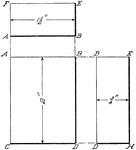
Projection Of Rectangular Prism
Illustration of the projection of a rectangular prism that is represented as if it were standing on…
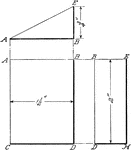
Projection Of Wedge
Illustration of the projection of a wedge of a rectangular prism that is standing on one of its triangular…
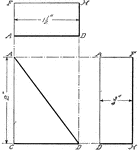
Projection Of Wedge
Illustration of the projection of a wedge of a rectangular prism that is standing on one of its rectangular…
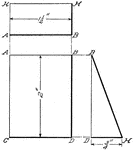
Projection Of Wedge
Illustration of the projection of a wedge of a rectangular prism that is viewed from the side.
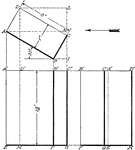
Projection Of Rectangular Prism
Illustration of the projection of a rectangular prism whose broad side makes an angle of 30° with…
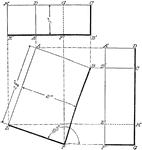
Projection Of Rectangular Prism
Illustration of the projection of a rectangular prism whose base makes an angle of 160° with the…
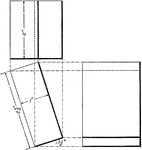
Projection Of Rectangular Prism
Illustration of the projection of a rectangular prism whose base makes an angle of 17.5° with the…
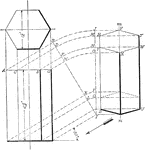
Projection Of Hexagonal Prism
Illustration of the projection of a hexagonal prism having two of its parallel sides parallel to the…
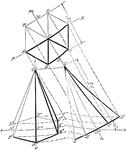
Projection Of Hexagonal Prism
Illustration of the projection of a hexagonal prism whose axis is parallel to the plane of the paper…
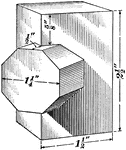
Intersecting Prisms
Illustration of the intersection of a quadrangular prism and an octagonal prism. The figures intersect…
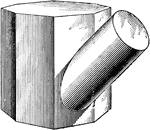
Intersecting Prism and Cylinder
Illustration of the intersection of an octagonal prism and a cylinder. The figures intersect at an oblique…
Development Of Rectangular Prism
Illustration of the development of a rectangular prism. "Assume now that the prism is laid on the drawing…

Plane Intersecting Octagonal Prism
Illustration showing the intersection of a plane with an octagonal prism.
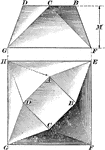
Irregular Solid With Triangular Surfaces
Illustration of an irregular solid form made up of triangular surfaces on a flat surface.

Irregular Solid With Triangular Surfaces
Illustration of an irregular solid form made up of triangular surfaces unfolded on a flat surface. A…

Types of Files
"Files. a, cotter-file when large, and verge- or pivot-file when small; b, square file (parallel or…

Triangular Double Arch
Tangrams, invented by the Chinese, are used to develop geometric thinking and spatial sense. Seven figures…

Triangular Double Arch
Tangrams, invented by the Chinese, are used to develop geometric thinking and spatial sense. Seven figures…

Triangular Double Arch
Tangrams, invented by the Chinese, are used to develop geometric thinking and spatial sense. Seven figures…

Triangular Double Arch
Tangrams, invented by the Chinese, are used to develop geometric thinking and spatial sense. Seven figures…
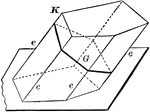
Lateral Area of A Prism
Diagram used to prove the theorem: "The lateral area of a prism is equal to the product of a lateral…

Two Equal Prisms
Diagram used to prove the theorem: "Two prisms are equal when the three faces about a trihedral of one…
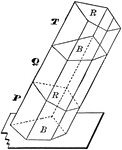
Oblique Prism Truncated Into 3 Sections
Illustration of an oblique prism constructed by the combination of three truncated prisms.




